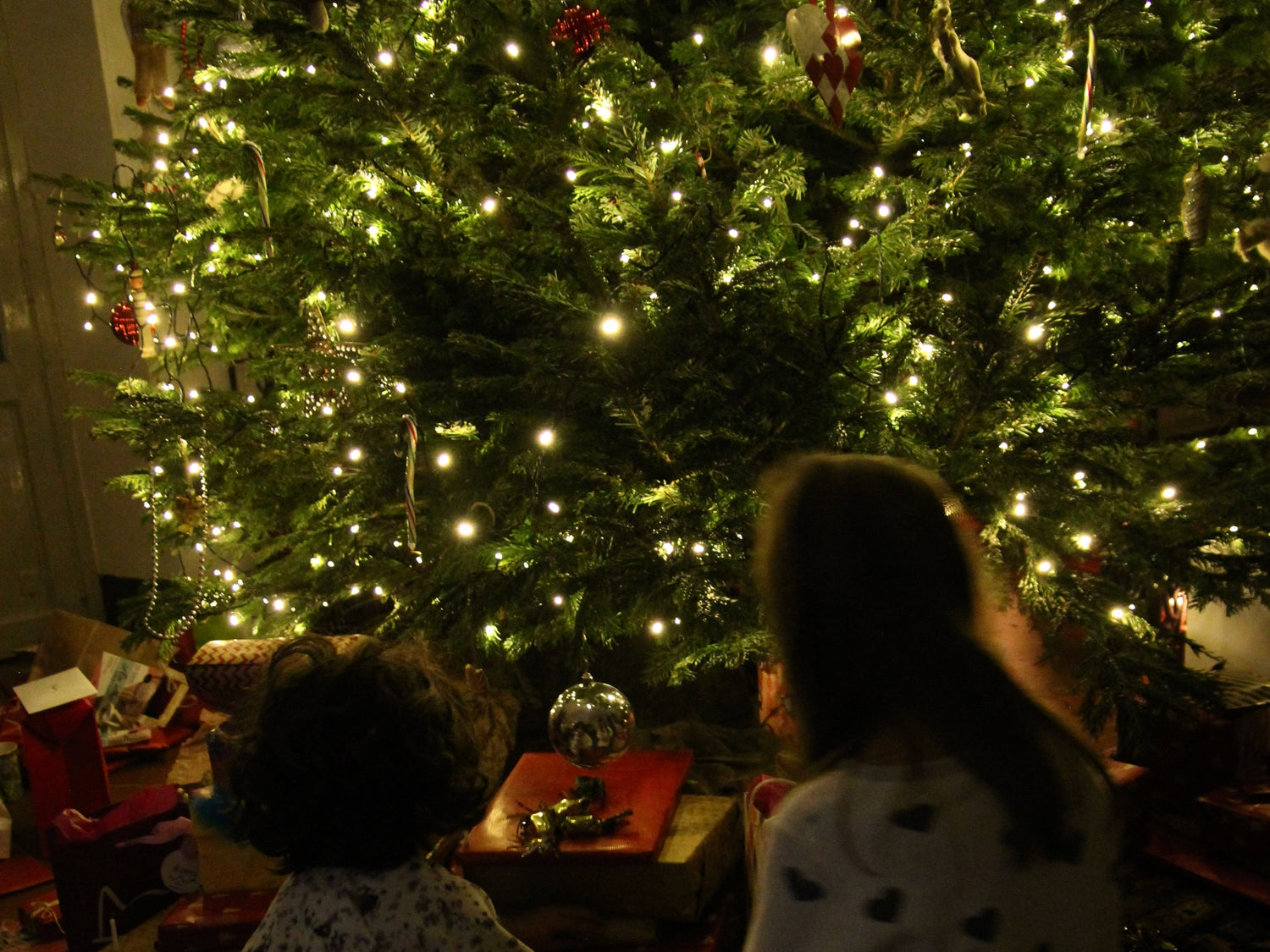Christmas is a particularly festive time in Provence, France. The region often remains temperate and sunny through December; the cold mistral wind generally doesn’t take hold until January. On clear, sunny days (often on Christmas) families eat their holiday meal outside in the soft winter sun. There is a series of rich traditions specific to this region of France.

Nativity Under the Tree

 |
 |

Le Blé de la Sainte-Barbe
Another Christmas tradition in Provence begins on December 4: le Blé de la Sainte-Barbe. Small shops all over the region sell little bags of wheat germ, to be planted on this day - the day of Sainte Barbe. This is the day that opens the advent season for the French in Provence. The seeds are grown in cotton and placed on the table for the Christmas festivities. They are symbolic of prosperity and if one’s grass has grown tall and green by Christmas, it is said the coming year will be a bountiful one. It’s a tradition that dates back to Roman times.

Christmas Concerts in Churches, Festivities in the Village
 A scene from our local village Christmas market
A scene from our local village Christmas market

There are more traditional concerts as well, choruses, guitarists, all singing traditional carols.
Shoes Under the Tree


Here is my husband and daughter, Colette, shining the shoes to place under the tree. Colette initially brought down 4 pairs of shoes with the hope that they could all be filled.
Papillotes are a chocolate candy made for the Christmas season in France. Traditionally they are made with an outer scintillating paper with sparkling striped ends. The inner sheet of paper holds a riddle, a joke or a fortune.

Christmas Eve Feast and the 13 Desserts of Noël
Christmas Eve dinner is a joyous occasion, served rather late at night in France (at ours, 10pm!), generally before leaving to attend midnight mass. Midnight mass (truly at midnight) can be a special scene: a live lamb is carried into the church on a priest’s shoulders, representing Christ. In some chapels in the region, the nativity is enacted with live figures.

A traditional Christmas Eve meal often features oysters, smoked salmon, blinis, fois gras and plenty of champagne.
My favorite Christmas tradition here in Provence is the 13 Desserts de Noël. The desserts are assembled and presented together to be served for the Christmas festivities and the associated meals. The desserts represent Jesus with his 12 disciples.

The 13 desserts are made up of an assortment of:
* Dried figs
* Dried dates (the dried fruits as a symbol of Christ coming from the mideast)
* Nuts: almonds, hazelnuts
* Chocolate mendiants: chocolate rounds topped with pistachios, raisin, nuts
* Fresh fruit: clementines, apples, melon
* Cookies from Aix (a traditional variety made with orange flower)
* Pompe à l'huile (a sweet cake or brioche made with orange flower water and olive oil)
* Gibassier (a galette made with fruited olive oil, spiced with anise)
* Candied fruit (here melon and red peppers!)
* Calissons d'Aix (a marzipan-like candy made from almond paste and candied melon)
* Bûche de Noël (traditional chocolate yule log cake)
* Black nougat (representing the forces of evil)
* White nougat (representing the forces of good)

There are whole markets dedicated to these desserts. People often order the cakes, biscuits and the chocolate bûche from their local boulangeries or make them reverentially at home. I like to take a drive to the next village over, which boasts a divine boulangerie (if you are in the region: La Biscuiterie de Rognes: 6 Avenue d'Aix, 13840 Rognes). The bakery is full of beautiful things to eat (all year-round), more like lovely crafts than food. I always order a few of the desserts on the list and pick them up Christmas Eve morning.
Whatever your traditions are, we wish you: Joyeuses Fêtes from Provence!




